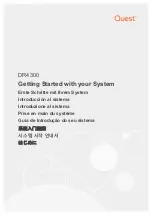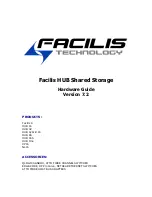
Power management
The power management function of the Ultrium 7 and Ultrium 6 Tape Drives controls the drive
electronics to be completely turned off or in a low-power mode when the circuit functions are not
needed for drive operation.
Adaptive read equalization
This equalization automatically compensates for dynamic changes in readback signal response.
Dynamic amplitude asymmetry compensation
This compensation dynamically optimizes readback signals for linear readback response from MR
read head transducers.
LTO Data Compression (LTO-DC)
The Ultrium LTO uses LTO-DC, which is an implementation of a Lempel-Ziv class 1 (LZ-1) data
compression algorithm. LTO-DC is an extension of Adaptive Lossless Data Compression (ALDC)
and an improvement over previous IBM lossless compression algorithms. IBM patented "Scheme-
Swapping" compression looks ahead at incoming data and determines the most efficient storage
method (ALDC or pass-through mode) to help optimize data compression and increase data
throughput.
LTO Cartridge Memory (LTO-CM)
Contained within the LTO Ultrium data cartridge is the LTO-CM, which is a passive, contactless
silicon storage device that is physically a part of the cartridge. The LTO-CM holds information about
that specific cartridge, the media in the cartridge, and the data on the media. The storage capacity of
the Generation 6 and 7 LTO-CM is 16320 bytes, which is double capacity of Generation 5 LTO-CM
8160 bytes. Communication between the drive and the LTO-CM is via a low-level RF field
transmitted by the drive to the cartridge.
Statistical Analysis and Reporting System (SARS)
The Ultrium Tape Drive uses SARS to help isolate failures between media and hardware. SARS uses
the cartridge performance history that is saved in the CM module and the drive performance history
that is kept in the drive flash EEPROM to help determine the likely cause of failure. SARS causes the
drive to request a cleaner tape, mark the media as degraded, and indicate that the hardware is
degraded.
Highly integrated electronics that use IBM engineered copper technology
This technology reduces the total number of components in the drive, which helps lower chip
temperatures and reduces power requirements to deliver a more reliable drive. The sixth-generation
drive electronics provide error correction of soft errors in the memory arrays in data and control
paths.
Components and connectors
The following figure shows the front of the TS2260. The front view of the TS2270 and TS2250 is similar to
the front view of the TS2260.
Figure 5. Front view of the TS2260
IBM LTO Ultrium 7, 6, and 5 Tape Drives for Lenovo
4




































